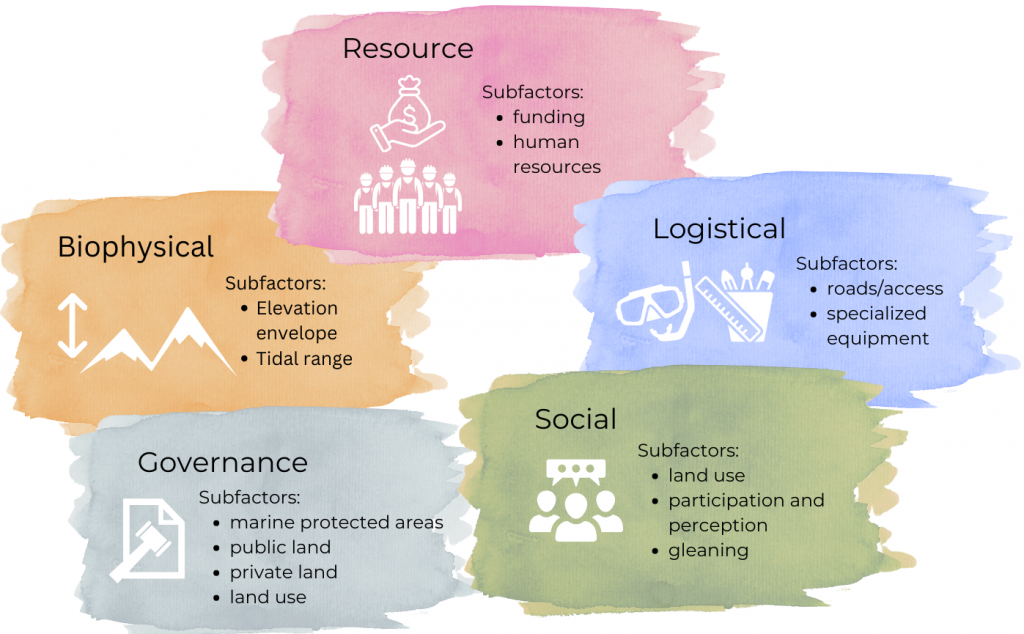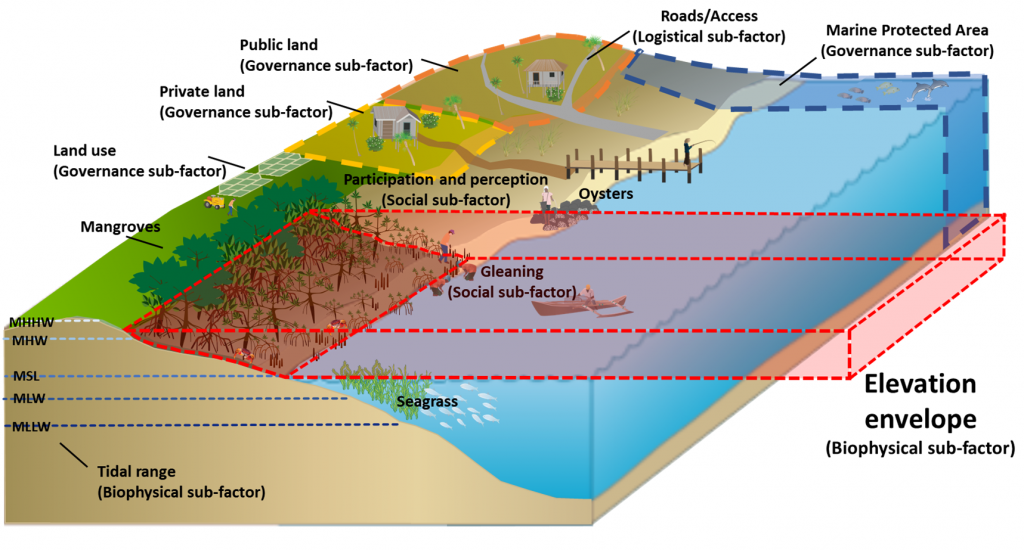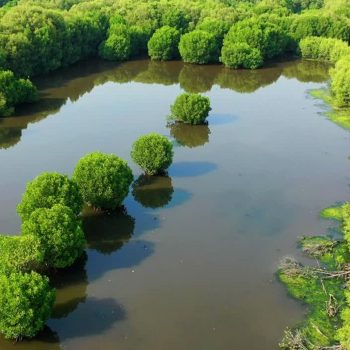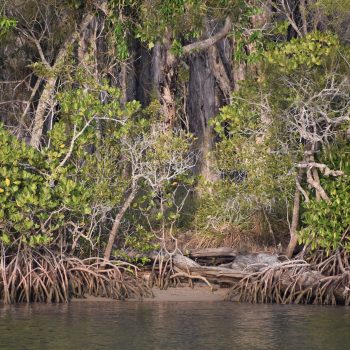
Feasibility of habitat restoration under multidisciplinary constraints
- Posted by Alex White
- On January 30, 2024
Written by Alex White and edited by Jasmine Hall
Mangroves provide vital ecosystem services on both a local and global scale. Benefits like carbon sequestration, habitat for sustaining fisheries and providing coastal protection have boosted the profile of mangroves in recent years. However, despite being targeted as high priority for restoration around the world, restoration failure is still relatively common. Why? One reason is that restoration planners often fail to consider the feasibility of factors that may influence whether a project succeeds or fails. What does the term feasibility mean in terms of restoration efforts? A recent review paper (Piccolo et al. 2024) published in the Ocean and Coastal Management journal examines the multidisciplinary constraints that influence habitat restoration feasibility. In the context of restoration planning, feasibility is ‘the probability a project will achieve its stated objectives’. The authors delve into factors influencing restoration, grouping them into 5 types of feasibility: biophysical, social, governance, logistical, and resource. These factors may dramatically influence a project’s outcome, yet can be overlooked or unforeseen during planning.

Fig. 1. Feasibility factors and an example of associated subfactors relevant to a mangrove restoration project.
Consider a hypothetical scenario where the project solely focuses on biophysical factors during site selection, neglecting crucial social aspects. Lack of stakeholder or community support can reduce restoration success, leaving ecosystems vulnerable to continued degradation. Governance may also wield significant influence over a restoration project’s likelihood of success. For example, in Sri Lanka, poor governance led to planting seedlings in inappropriate locations that experienced browsing and trampling by livestock, resulting in continued degradation even after restoration.
To reduce the likelihood of failed outcomes and ensure a systematic, transparent, and repeatable approach, it’s crucial to quantify and spatially analyse such socioeconomic factors during site selection. This method informs decisions and enhances the probability of successful restoration.
While restoration projects often do consider multiple feasibility factors, they are not always explicitly represented or quantified. E.g. practitioners may map biophysical feasibility using spatial data, but might inadvertently overlook crucial social or governance constraints. In conservation planning, feasibility is a key element of cost-effectiveness analysis. Calculating cost-effectiveness involves looking at the benefits of an action divided by its cost, multiplied by the probability that the action will achieve its objective. Unfortunately in practice, feasibility factors beyond biophysical are often omitted, limiting comprehensive evaluation of potential restoration sites.

Fig. 2. Example of a coastal zone showing possible factors potentially influencing mangrove restoration site selection. This mangrove ecosystem is within the mean sea level (MSL) and mean high water mark (MHWM), forming the ‘elevation envelope’. Yellow and orange dashed lines show boundaries for private and public land. Blue dashed lines show a Marine Protected Area (MPA). Gleaning and fishing activities are shown in and around the mangroves (Piccolo et al. 2024).
To address these gaps, the approach involves four steps: 1) Explore, 2) Describe, 3) Assess, and 4) Analyse. By identifying and estimating multiple feasibility factors, the authors aim to provide a comprehensive blueprint for successful restoration initiatives. Considerations are outlined to improve capacity to predict restoration feasibility across multiple factors. The goal is to provide decision-makers, scientists, and practitioners with a repeatable and transparent approach to quantitative planning for restoration. This approach offers a strategy for improving outcomes in restoration efforts so that by understanding, quantifying, and incorporating multiple feasibility factors, stakeholders can be empowered to make informed decisions. Each successful restoration effort increases the likelihood of achieving the global targets necessary for a sustainable future.




0 Comments